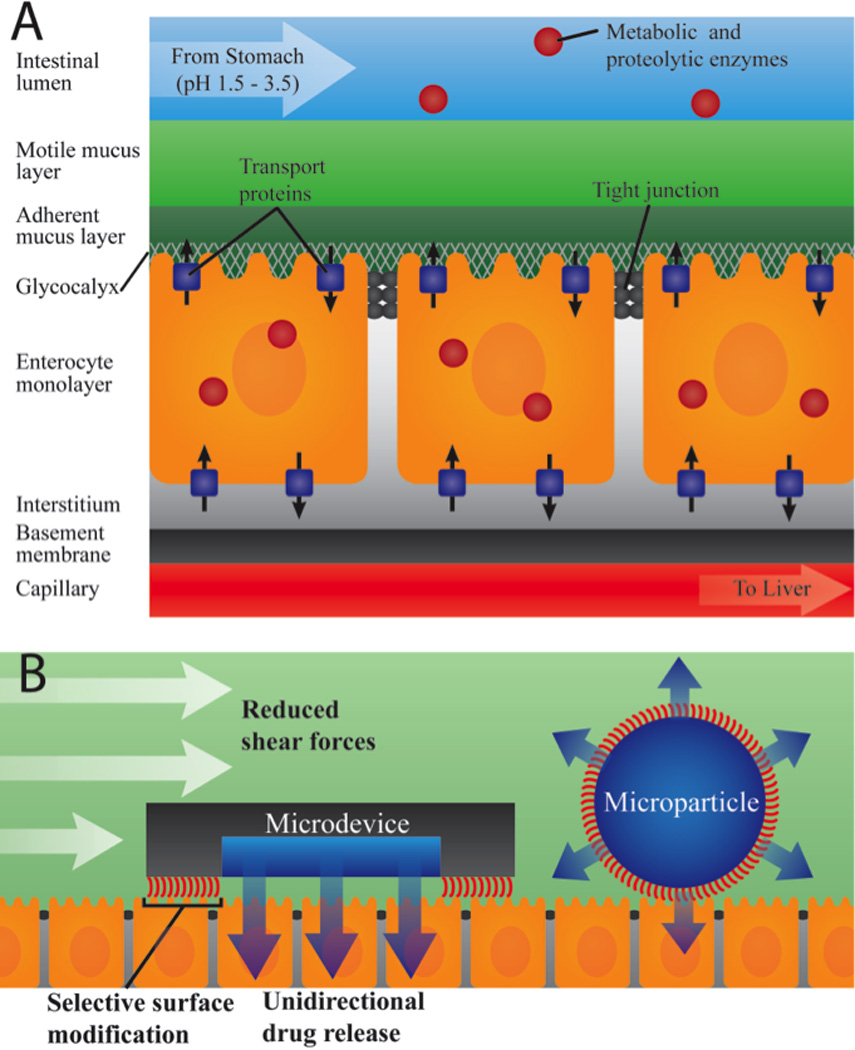Figure 1.

A. Physiological barriers to oral drug delivery. After encountering digestive enzymes and the low pH of the stomach, drugs enter the small intestine, the primary site of drug uptake where drugs encounter additional metabolic and proteolytic enzymes. Drugs must then pass through the motile and adherent mucus layers, the cellular monolayer through either a paracellular or transcellular route and finally pass through the interstitium and basement membrane to enter the capillary from which they are shuttled to the liver before entering systemic circulation. B. Advantages of asymmetric microdevice design for oral drug delivery include 1) reduced shear force per mass, increasing residence time, 2) unidirectional drug release toward endothelial tissue, increasing drug permeation, and 3) sustained release, reducing drug exposure to the harsh conditions of the GI tract and decreasing drug degradation.
